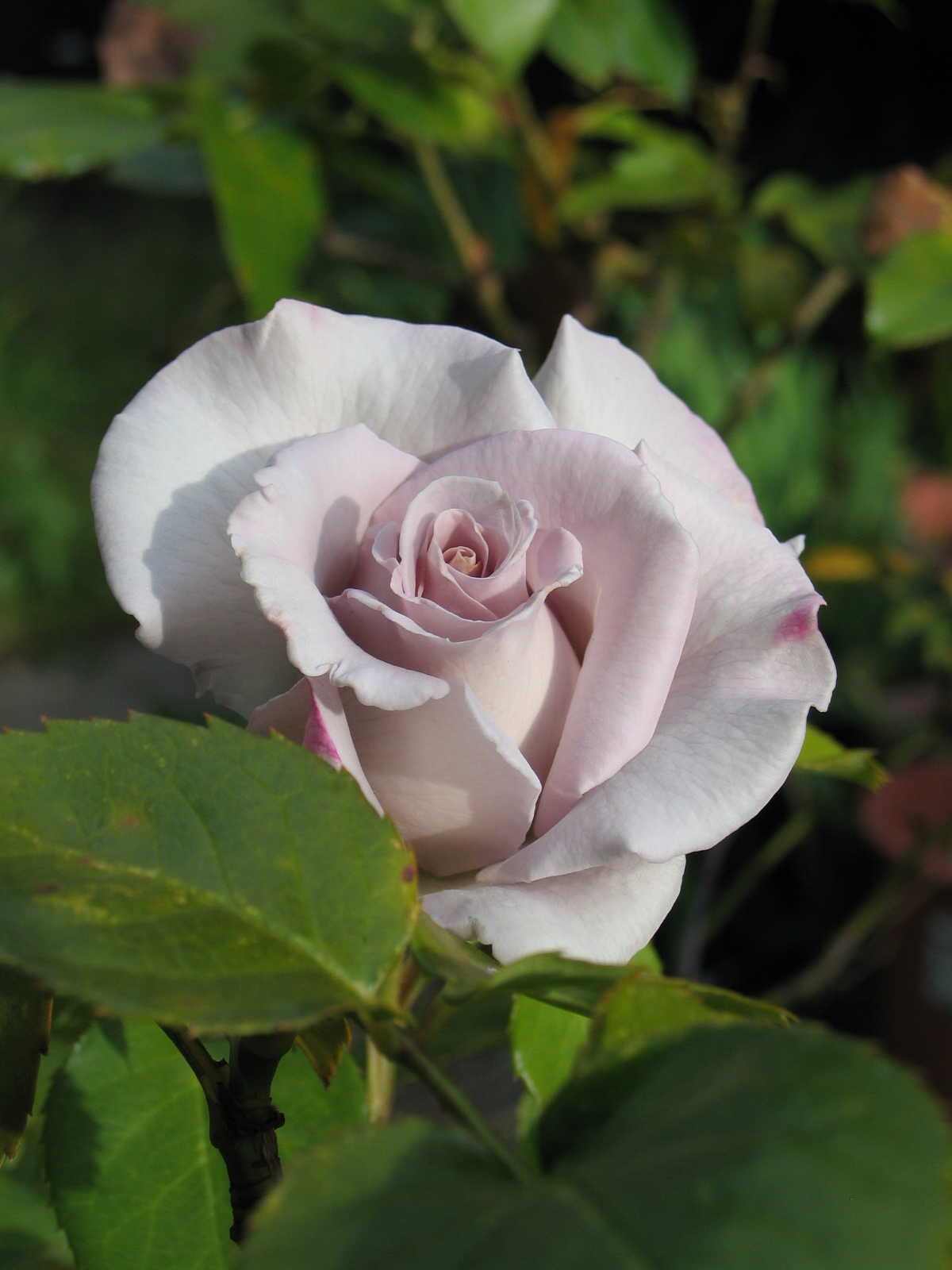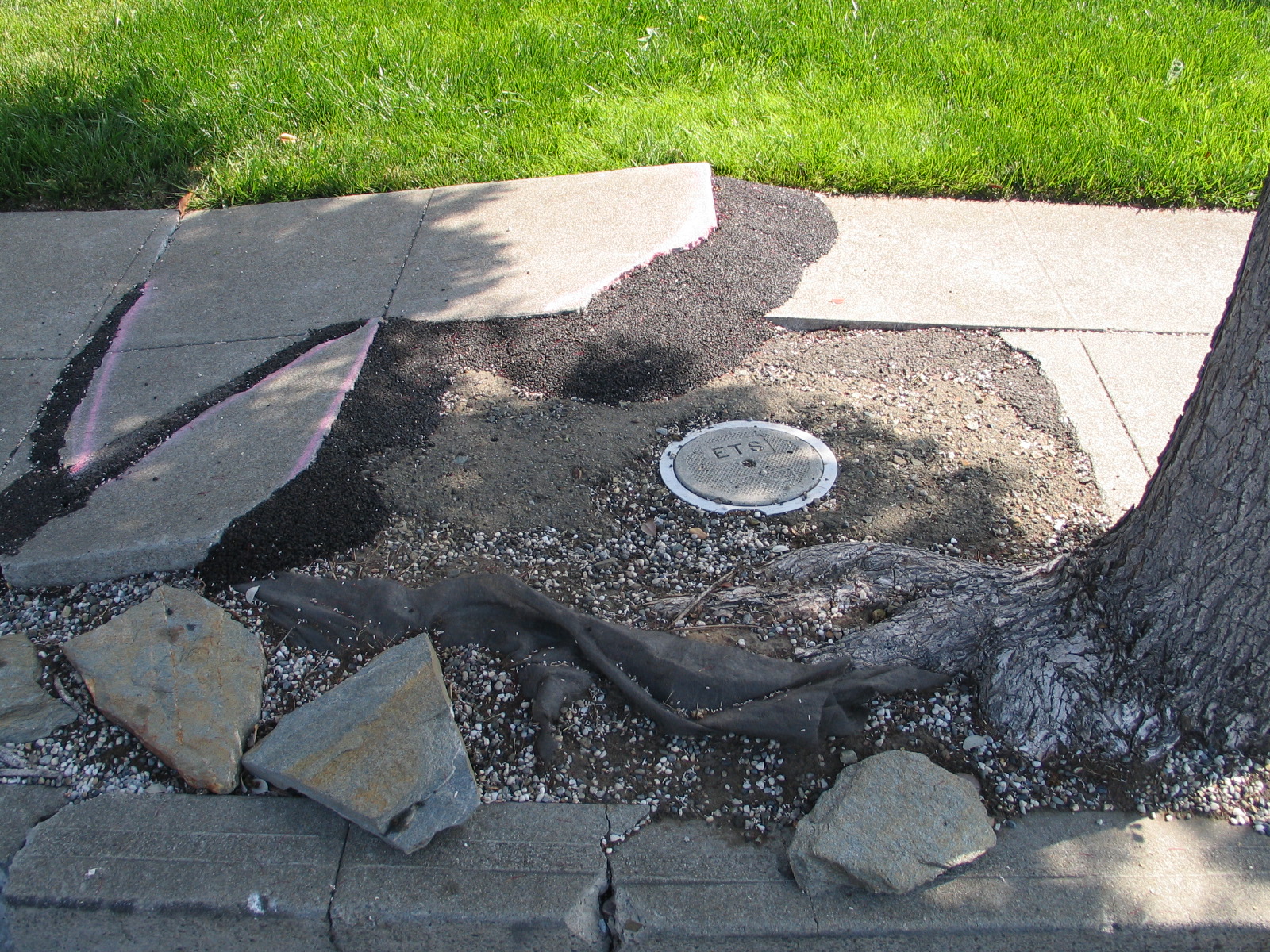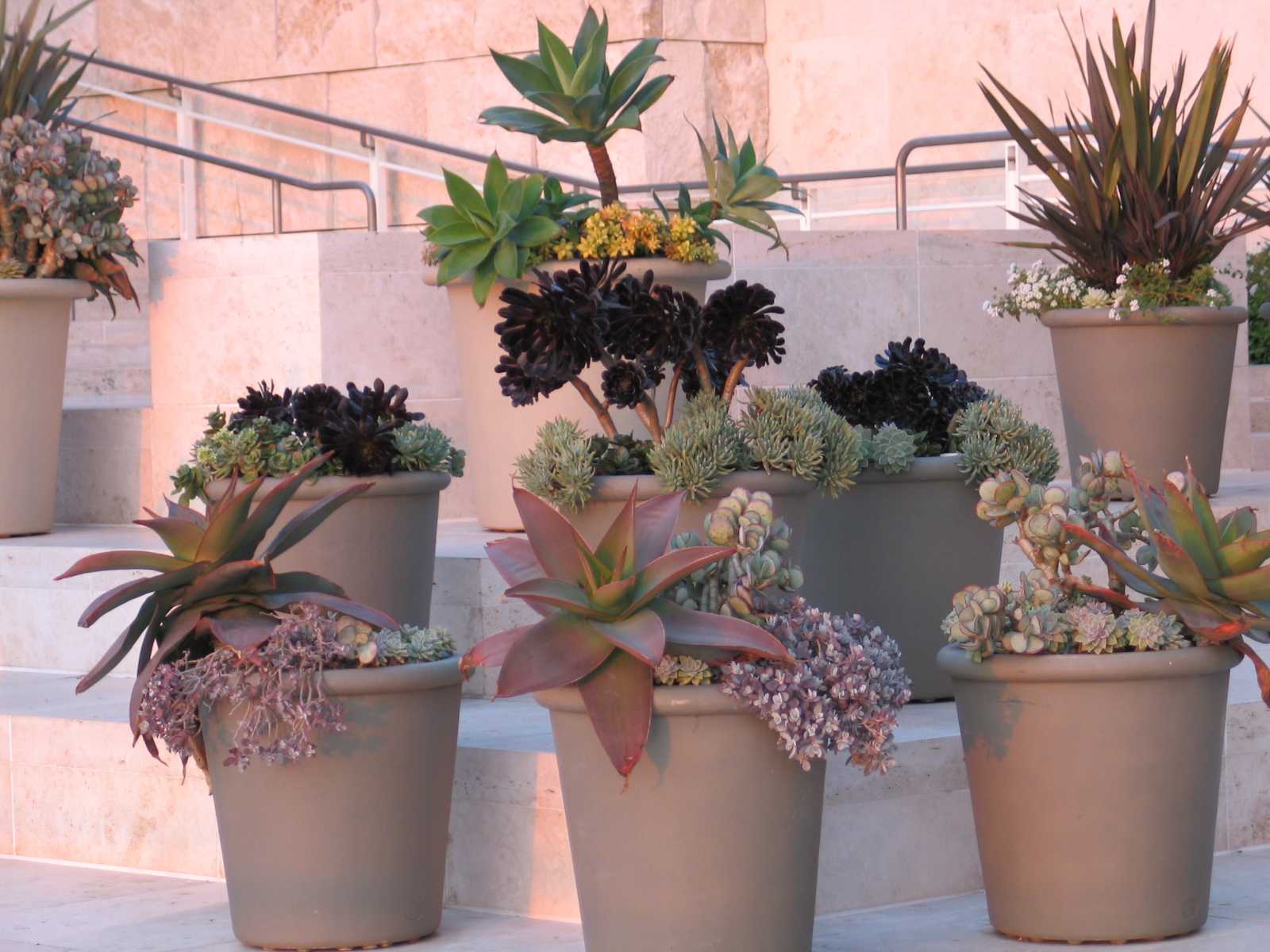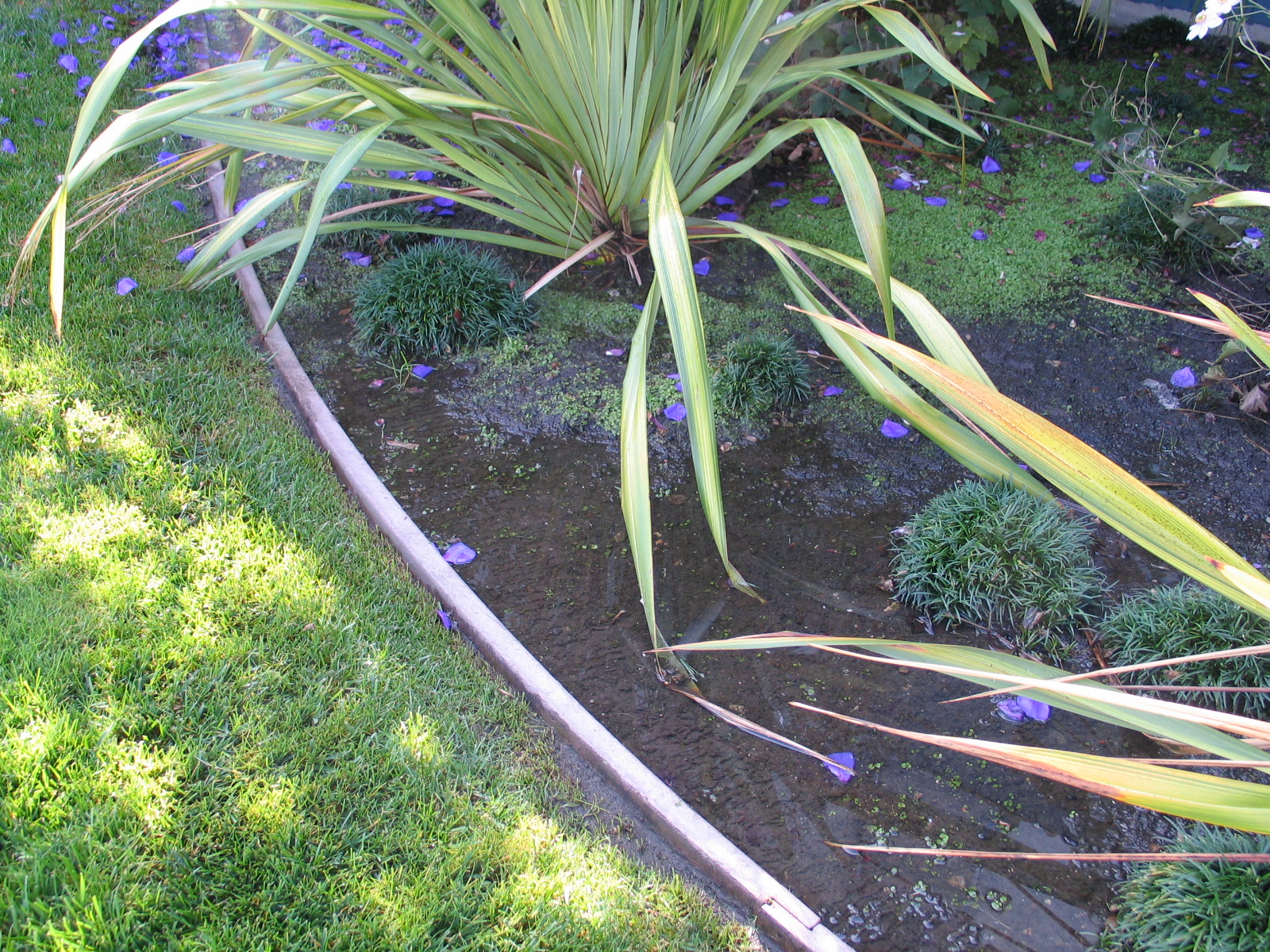Client: the irrigation is going to be expensive and I just want it done, so I'm going to hand water. I don't mind watering the garden myself.
Me: I strongly recommend that you install the system, here's why: (see the rest of this post)
But my brain is screaming: dear Lord, this again?!
160816 water ring 002
Yes. In California, you really do want to pay for that irrigation system... and no, I do not recommend you design it yourself with components from Home Depot. My own father, on hearing that I had attended several classes and installation workshops on drip irrigation asked me 'why? drip irrigation doesn't even work, the pipes always blow apart. 'uh, dad? That's 'cause you did it wrong. Sorry, man. Below are a couple of reasons to install that system:
Regular irrigation is sorta like regular nutrition. Everyone (plants, animals, you) does better and stays healthier on a regular diet - you wouldn't eat only 20,000 calorie breakfasts on Monday and nothing the rest of the week, right? (right?!) - well, your plants want water they can count on, too. Not 3x a day like you, no, but consistently? yes.
It isn't going to get cheaper if you wait....
It is MUCH harder to install the infrastructure (valves, sleeves, etc) once your plants have been growing a while.
You are probably not as reliable as you think. In my own garden, I'm planning for an irrigation system (I'd hoped this summer, but I don't think I'll make it) because even though I know a lot about plants and watch my garden very closely, constantly moving the hose around... I'm always battling unhappy plants! I miss one, it wilts. I forget, they die.
You'll eventually get old or busy or forgetful or go on a vacation. Your plants don't negotiate; they'll resent the neglect and look like hell... and if you think your neighbor is truly happy to water them while you are away, you've either been lied to or have an actual saint living nearby.
Dead plants are a terrible investment (same goes for unhappy, wilted, sick or stressed plants)
Healthy landscaping adds to property value (that's a whole 'nother blog post) and the value added will far exceed what it cost you to install the irrigation!
You can always save a little money by getting smaller plants.
You save nothing and risk your investment by scrimping on the irrigation. Invest in your investment - your property, your plants, and they'll pay you back.
Stressed plants get diseases and pests that the exact same plant (in the exact same place, etc) would not get if it were happy.
Irrigation "ET" (evapotranspiration) controllers these days can shut off if they detect rain - there are oodles of technological advances in these mini computers so one that was properly specified and programmed will out-perform even an excellent gardener's seasonal adjustments or your carefully considered efforts. They can be programmed for different soils and a myriad of conditions. Get one! See here from Hunter on their line-up of ET controllers.
WELO - California state law that requires water efficient irrigation be installed on new and renovated landscapes 500 sf or larger as of 1 December 2015 (those that are involved in a permit process will learn).
Listen, it isn't sexy or exciting to pay for the invisible stuff - the best irrigation systems are the ones you don't notice - there's no bling here except for total weirdos like me (and my colleagues!) who geek out on it. However, to impress your dinner guests, a healthy and happy landscape speaks volumes and will provide years of happy bling-y green.At the time of this writing, I am finalizing a slide deck for the "Lose Your Lawn" talk that I am giving in 4 days. If you found yourself here thanks to that talk, then I want you to know I appreciate your reading this, I wrote it for you!My blog posts come from real conversations with real clients, students, and trainees, so don't be surprised if you ask a question and find it answered in my blog later!In the Bay Area, I highly recommend asking the Urban Farmer Store for irrigation designer referrals or to get clarification on irrigation questions.










 Watering Practices: I love walking around in the evening, winding down after my day. I see a lot of irrigation at night, though, and wish that more people understood the benefits of watering in the early am instead. Plants lose most of their moisture during the heat of the day as a byproduct of photosynthesis (evapotranspiration from photosynthesis is where plant-released oxygen comes from), so watering before plants need it is ideal (but if you have wilting, dry plants at noon, they need it asap!). If you have good drainage, so much the better because the (assuming we're not growing aquatic plants) roots won't be left to wallow in suffocating muck. Leaving plant roots in cool, damp soil as the temperature drops (evening watering) can promote the growth of undesirable mold, fungus, and plant disease. Please also pay attention to the drainage of your soils! The water here is pooling due to being both trapped by the edging and also because the soil in this area is so over watered, it has developed a scummy skin that keeps their irrigation efforts on the surface for hours after each watering.Please know that there are
Watering Practices: I love walking around in the evening, winding down after my day. I see a lot of irrigation at night, though, and wish that more people understood the benefits of watering in the early am instead. Plants lose most of their moisture during the heat of the day as a byproduct of photosynthesis (evapotranspiration from photosynthesis is where plant-released oxygen comes from), so watering before plants need it is ideal (but if you have wilting, dry plants at noon, they need it asap!). If you have good drainage, so much the better because the (assuming we're not growing aquatic plants) roots won't be left to wallow in suffocating muck. Leaving plant roots in cool, damp soil as the temperature drops (evening watering) can promote the growth of undesirable mold, fungus, and plant disease. Please also pay attention to the drainage of your soils! The water here is pooling due to being both trapped by the edging and also because the soil in this area is so over watered, it has developed a scummy skin that keeps their irrigation efforts on the surface for hours after each watering.Please know that there are  Runoff: Okay, so we've talked about water and your vegetation, and we know that we don't want to water the sidewalk, but what about all that flooding that we get in a good storm? Permeable paving products hope to help solve the problem, see
Runoff: Okay, so we've talked about water and your vegetation, and we know that we don't want to water the sidewalk, but what about all that flooding that we get in a good storm? Permeable paving products hope to help solve the problem, see